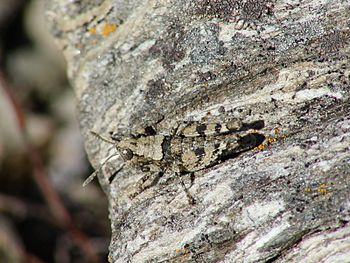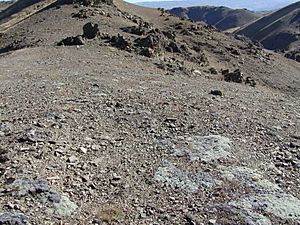Sigaus childi facts for kids
Quick facts for kids Sigaus childi |
|
|---|---|
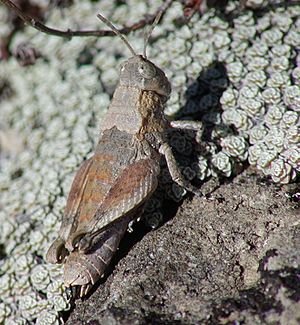 |
|
| Female | |
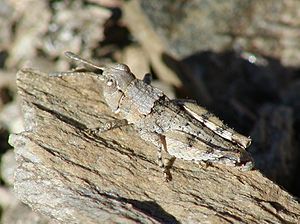 |
|
| Male | |
| Scientific classification | |
| Kingdom: | |
| Phylum: | |
| Class: | |
| Order: | |
| Family: | |
| Genus: | |
| Species: |
S. childi
|
| Binomial name | |
| Sigaus childi Jamieson, 1999
|
|
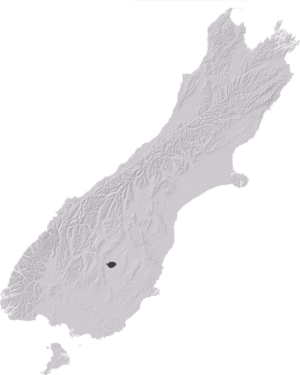 |
|
| Distribution of S. childi | |
Sigaus childi is an endangered protected species of grasshopper known only from the Alexandra district of the South Island of New Zealand. It is one of just two species of grasshopper listed for protection under the New Zealand Wildlife Act 1953 (the other is Brachaspis robustus). It is currently classified asThis species is classified as "At Risk, Naturally Uncommon" by the Department of Conservation. The genus Sigaus is endemic to New Zealand.
Taxonomy
Sigaus childi was described by Colleen Jamieson in 1999, from a male specimen collected on 15 December 1997 at Galloway Station, Otago (45°12′35″S 169°29′26″E / 45.209820°S 169.490626°E). The holotype and paratype are deposited in the Otago Museum, Dunedin. The species was named after the late Peter Child of Alexandra, who first collected it from Graveyard Gully in 1967.
Description
Sigaus childi is morphologically cryptic and polymorphic in colour, ranging from pale grey through earthy tones to green and black. Some individuals closely match foliose lichens that grow in rocks in the area, but others more closely resemble gravels or pebbles. They rely on camouflage rather than hopping to evade predators, and their hops are short: 30–40 cm and 15 cm high.
The wings on S. childi are very small – between 1–2 millimetres (0.039–0.079 in); like most New Zealand grasshoppers, this species is flightless. Males are 11–13 millimetres (0.43–0.51 in) long; females are twice as large, 21–25 millimetres (0.83–0.98 in). They have no ears, and do not sing.
Distribution and habitat
This species has a patchy distribution in a small area of about 200 square kilometres around the township of Alexandra, 200–500 m above sea level. Searches have been carried out on the northern end of the Knobby Range, North Rough Ridge, and the Rock and Pillar Range: all have failed to locate further populations. Sigaus childi is primarily found on dry, open, sparsely vegetated slopes, usually on north-facing hillsides, but rarely on modified farmland. Most of these sites appear rocky, mainly due to their low growing and sparse vegetation.
Another more widespread species, S. australis, that lives mostly in subalpine habitat in the mountain ranges nearby, also occurs in this lowland semi-arid habitat. This brings it into close contact and sympatry with S. childi at some locations. Genetic data indicate extensive gene flow between these two species.
Conservation
Threats to S. childi include introduced predators such as cats, rodents, mustelids, and hedgehogs. They are also eaten by native skinks. Rabbits compete with them for food plants (sorrel, hare's-foot clover, viper's bugloss, and Raoulia). Sigaus grasshoppers evolved during Pleistocene glaciations and are adapted to arid open habitats, so they are threatened by landscape modification like irrigation. As at 2016 this species was classified as "At Risk, Naturally Uncommon" by the Department of Conservation.


